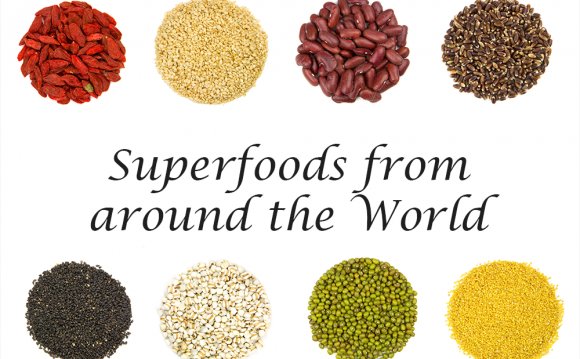
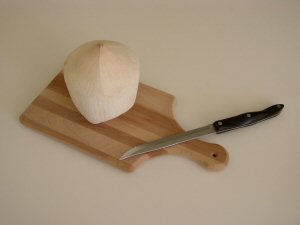 What moist and fresh young coconuts look like.
What moist and fresh young coconuts look like.
Examples of old, moldy coconuts: The water inside may still be fine to ferment (see picture on page 2).
Lay young coconut on its side and cut several thin slices from the bottom.
A circle appears (often white, sometimes a brown ring). This indicates the soft spot or way into the sterile, sweet coconut water.
Sometimes a hard knot makes it more difficult to cut through the coconut. Usually the hole is in or beside this knot.
Poke down through soft spot, creating a hole in the coconut shell.
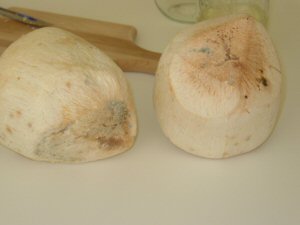 Setting the coconut down into a sink, so "cone-shaped" head nestles firmly into drain makes this easier. Widen the hole with a carrot peeler, so water can pour out.
Setting the coconut down into a sink, so "cone-shaped" head nestles firmly into drain makes this easier. Widen the hole with a carrot peeler, so water can pour out.
Each coconut contains 1½ cups of liquid. Open 3-4 coconuts to obtain 1½ quarts.
If the water is pink, do not use it (water on the right is spoiled, and so is the coconut).
Pour Coconut Water through strainer into sauce pan. Ideally, Microflora prefer that the liquid be 92° F (31° or 32° degrees C), so be careful not to overheat.
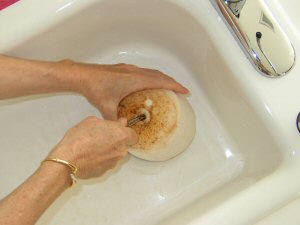 Use an inexpensive thermometer if desired, to check the temperature.
Use an inexpensive thermometer if desired, to check the temperature.
Or wash your hands well and dipping your finger into the coconut water, test for the right temperature. At 92, you won't feel hot or cold. It will be a neutral feeling or "natural feeling".
Add Body Ecology's kefir starter or Body Ecology's culture starter to the heated coconut water. The culture starter contains plantarum, an antiviral bacteria, and the kefir starter contains lactobacillus and beneficial yeast.
Put lid onto glass container and shake well!!
Ideally the room temperature should be around 70°F to 75° F). If your room is colder you may want to place glass container into insulated storage. Kefir is ready in 36 hours (may vary with temperature).
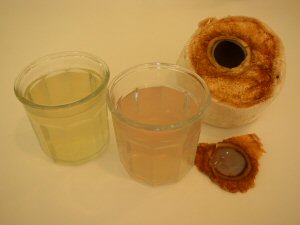
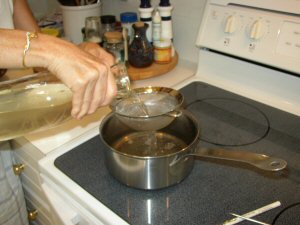
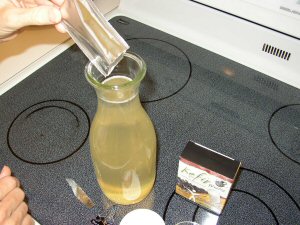
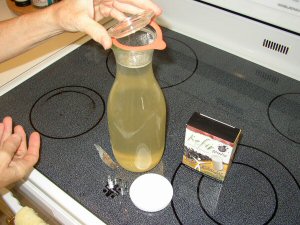
YOU MIGHT ALSO LIKE











